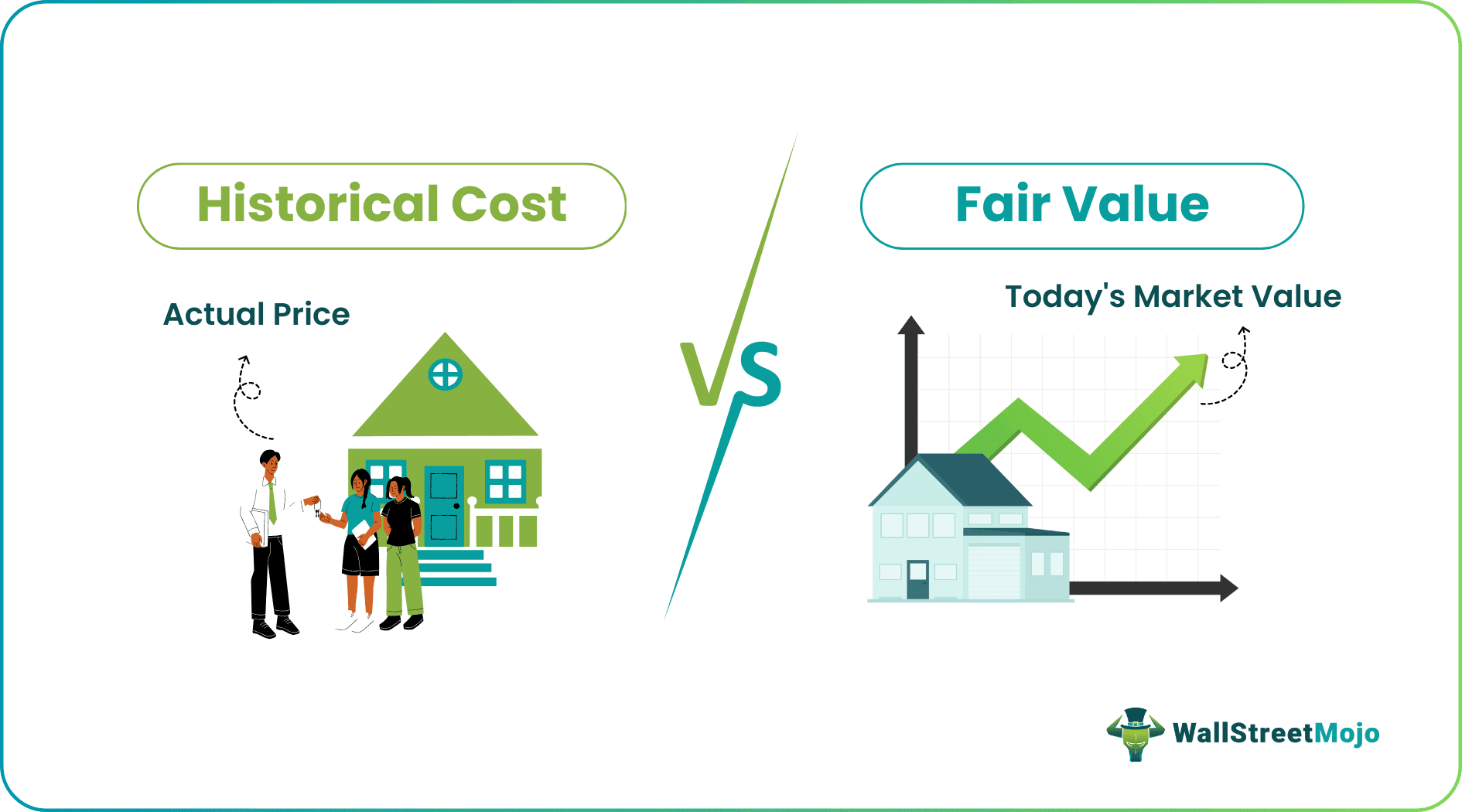Let us now look at the head-to-head difference between historical cost vs. fair value:
Table Of Contents
Valuation is a highly subjective matter. Nevertheless, valuation is the base for all the transactions, business analysis, and mergers and acquisitions deals. Valuation may be at historical cost, fair value, notional value, intrinsic value, etc. The primary purpose of doing valuation is to identify the correct value of the asset for which a deal or transaction is to be undertaken. It is not only helping sellers determine the right price for their commodity but also this aids in reaching the level to identify which class of market and the customer can be identified to settle the deal.
In this article, we will look at historical cost vs. fair value in detail –
Historical cost means the actual price at which the transaction was initiated. All the commodities or assets present in the balance sheet are needed to be disclosed at historical value. Historical cost is globally accepted as a measure to record the property plant and equipment. It will always show assets on a historical basis, considered for calculating depreciation and other statutory matters.

Fair value means the actual value of the asset in the market as on the day. It is highly dependent on the demand, availability, perishability, market, set of assumptions, etc. Professionals are required to determine the fair value of any asset, commodity, or intangibles. Fair value is also known as intrinsic value, actuarial value, market price, etc.
Let us understand the historical cost vs. fair value with an example:
ABC Ltd. acquired land at $100,000 in 2002
The market value of $1.75 million is considered the asset's fair value.
Here, we provide you with the top 8 differences between historical cost vs. fair value.

The critical differences between historical cost vs. fair value are as follows: –
Let us now look at the head-to-head difference between historical cost vs. fair value:
| Basis – Historical Cost vs. Fair Value | Historical Cost | Fair Value |
|---|---|---|
| 1. Depreciation/ Impairment | Historical cost is when a transaction is done or an asset is acquired. Depreciation is always getting calculated on the historical cost. | Fair value means the current market price that the investment can fetch. Impairment is always calculated on a fair value basis. |
| 2. Layman/Professional | The layman can easily identify the historical cost as it is nothing but the transaction price. | Professionals/actuaries are needed to calculate fair value. |
| 3. Items in the balance sheet | As per Indian GAAP, property, plant, and equipment must be disclosed at historical cost in the balance sheet. | As per Indian GAAP, financial instruments must be declared at fair value in the balance sheet. |
| 4. Accounting Standard | AS 16 requires historical cost-based valuation. | AS 30, 31, 32, and IFRS 9 requires fair value-based valuation. |
| 5. Calculation | The historical cost calculation is easy. | The fair value calculation is highly complex. |
| 6. Assumptions | Historical cost does not require any assumptions. | Fair value calculation requires various assumptions based on which fair value can be derived. |
| 7. Comparability | A comparison is not possible under historical-based valuation as various methods can be adopted for depreciation, inventory valuation, etc. | A comparison is possible between two entities under the said method of valuation that will disclose all the assets at fair value. |
Valuation is at heart while discussing the business. The historical value will keep track of the value of the transaction at the time of the acquisition, while the fair value shows the attainable value of the same transaction as on date. Also, there are many approaches to calculating them and deriving different valuations based on various assumptions. Therefore, it is always challenging to choose the right method. Also, there will be a financial impact based on the mode selected.